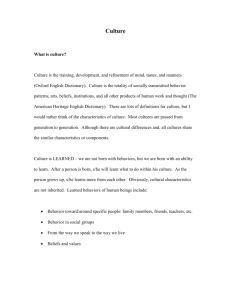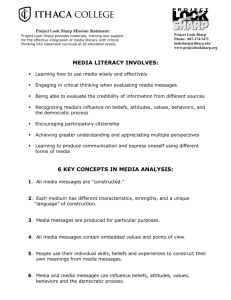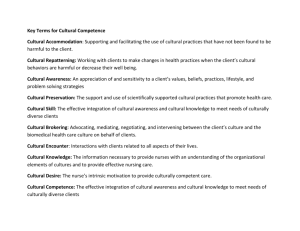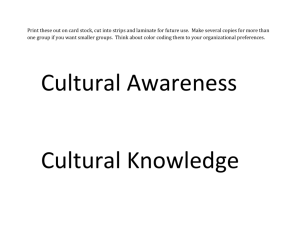Who are the Members of this Institute?
advertisement
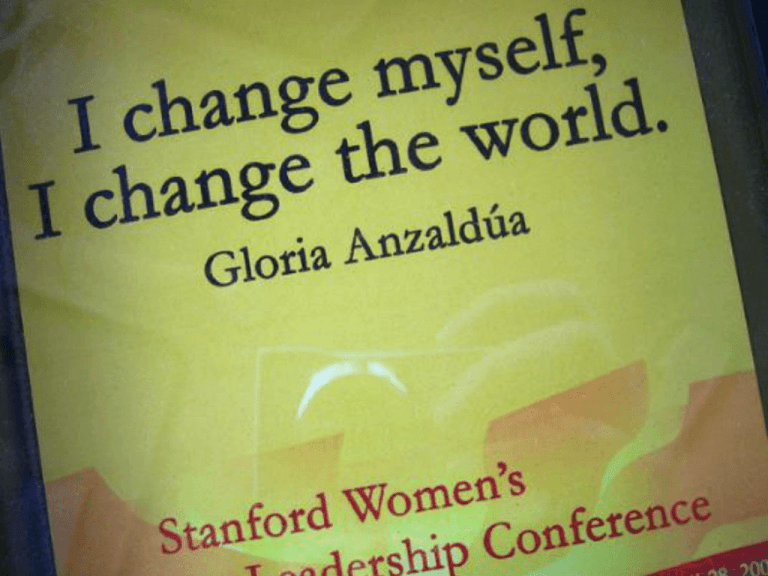
September 18, 2012 LAKEVILLE PUBLIC SCHOOLS LEADERSHIP TEAM INSTITUTE Welcome • Candace Raskin • Dee Wells • Barb Wilson • Welcome, facilitator introductions –Why this institute? Who are the Members of this Institute? • Find someone you know well. • Sit by each other – don’t talk • Go to www.wordle.net • Create a wordle on the partner you selected using words you believe describe his/her... – Leadership style – Core Beliefs – Passions Who are the Members of this Institute? • Share your wordle with your partner • Join another pair you don’t know well • Share the wordle you did about your partner with your group • Take out your journal and reflect – What was spot on – What was a surprise – What was missing Today • • • • • • Introductions Lakeville Leadership Team Mission and Vision Cone of Silence Overview of Beliefs Beliefs to Behaviors = Results School Culture Lakeville Leadership Team Institute’s Mission Every participating leader will develop a professional learning culture within their school/environment that ensures equity and opportunity—every child, every day. Lakeville Leadership Team Institute Vision In an era of unprecedented educational challenge and need, develop a team of leaders that lead with fearlessness, skill, self knowledge and racial competence so that under their leadership, EVERY child fully achieves. Cone of Silence http://www.youtube.com/watch?v=g1eUIK9CihA Public Knowledge: This information is not confidential and is stated as such by the person speaking.. Permission Granted: This information was shared confidential. Someone asks for permission to repeat it and permission is granted. Cohort confidential: This information is confidential. It can never be repeated outside the Cohort meeting. Attila the Hun: The speaker can state “Attila the Hun” after sharing something that they never want to be spoken of again, even in the cohort meeting… What Does a Breach Look Like? • Discussing Institute matters with anyone including a spouse or significant other. No quoting others. • Discussions outside of our Institute can be overheard or intercepted. No email, voice mail regarding our matters when it’s confidential • Never talk about an Institute member when they are not present. Similar to gossiping. • Even long after the Institute is over, continue to honor the cone of silence. INSTITUTE BELIEFS Collaborative Teaming Participative leadership focused on teaching and learning Common Mission, Vision, Beliefs, Behaviors Mission Vision Beliefs Results 14 Behaviors Systems of Prevention and Intervention that Ensure Academic Success for All Students Data Driven Decision that Promotes Continuous Assessments and Improvement Interdependent Culture Based on Trust Leadership Focused on Results and Student Learning Professional Development that is Teacher Driven and Embedded in Daily Work The question confronting most school and district leaders is not, “What do we need to know in order to improve?” but rather, “Will we turn what we already know into action?” 20 The Construction Process… Mission Vision Beliefs Results 21 Behaviors If we believe every leader in this institute can and will generate better achievement results than they currently have… Then every leader is held accountable with high expectations and equal access to all opportunities… If you believe… Then we behave… • Work with a belief that was assigned to your table….. • What’s the belief? • What are the behaviors that should coincide with the belief? 23 to behaviors Beliefs to Behaviors K-12 Administration Behaviors for our Institute • Each table will generate the top three behaviors to coincide with the belief assigned. • On chart paper write your belief and your top three behaviors. • Report to the whole group Assignment #1 • Repeat this activity within your school at a staff meeting. • Let’s have a discussion – who doesn’t have a building assignment? • How will you engage in this activity? Understanding School Culture to Improve Learning 27 Defining School Culture • At your table, develop descriptors of school culture • Write those descriptors on the post-it notes at your table Understanding School Cultures Dan Lortie (1986) described teachers who still work under school conditions of long ago. Isolation – Teachers have only their own expertise, energy, and time to solve all the problems within their classrooms. No shared dialogue around the technical core of teaching—yet researchers of improving schools identified one essential dimension common to all: “Professionals constantly talk with each other, in a problem-solving, action-oriented way, about teaching.” 29 Culture is a Powerful Force 30 School Culture: What is it and what isn’t it? What Culture is… The way we do things around here. 31 What school culture is not… • • • • School climate School environment School spirit History 32 A school’s perception of itself shapes what it ultimately becomes, or what it represents to others. 33 Film Clip From Dead Poet’s Society determine the following: Historical and current artifacts ▪ Behavior norms, traditions, and myths Commonly held values and beliefs Internal and external participants Basic assumptions ▪ Underlying basis for actions, values and beliefs What were the roles of leaders? What were the roles of participants? 34 Dead Poet’s Society • http://www.youtube.com/watch?v=2c_A7pst BjU 35 Discussion From Dead Poet’s Society determine the following: Historical and current artifacts ▪ Behavior norms, traditions, and myths Commonly held values and beliefs Internal and external participants Basic assumptions ▪ Underlying basis for actions, values and beliefs What were the roles of leaders? What were the roles of participants? 36 Which of the following pictures describes your school’s culture? Explain why. 37 Which of the following pictures describes the culture that you would like to develop in your school? 38 39 To understand your school’s culture is to understand its future. Class of 2025 RETURN TO YOUR TABLE Defining School Culture • At your table, review the culture descriptors on your post-it notes • Pull out the descriptors that you have reconsidered • Add any descriptors that you now believe define school culture on post-it notes Assignment 2 • Repeat the culture exercise with the post-it notes in your building at a staff meeting • Discussion – how will those not assigned to a building complete this assignment? Journal • What is the most significant behavior that you will change or begin based on tonight’s work?
